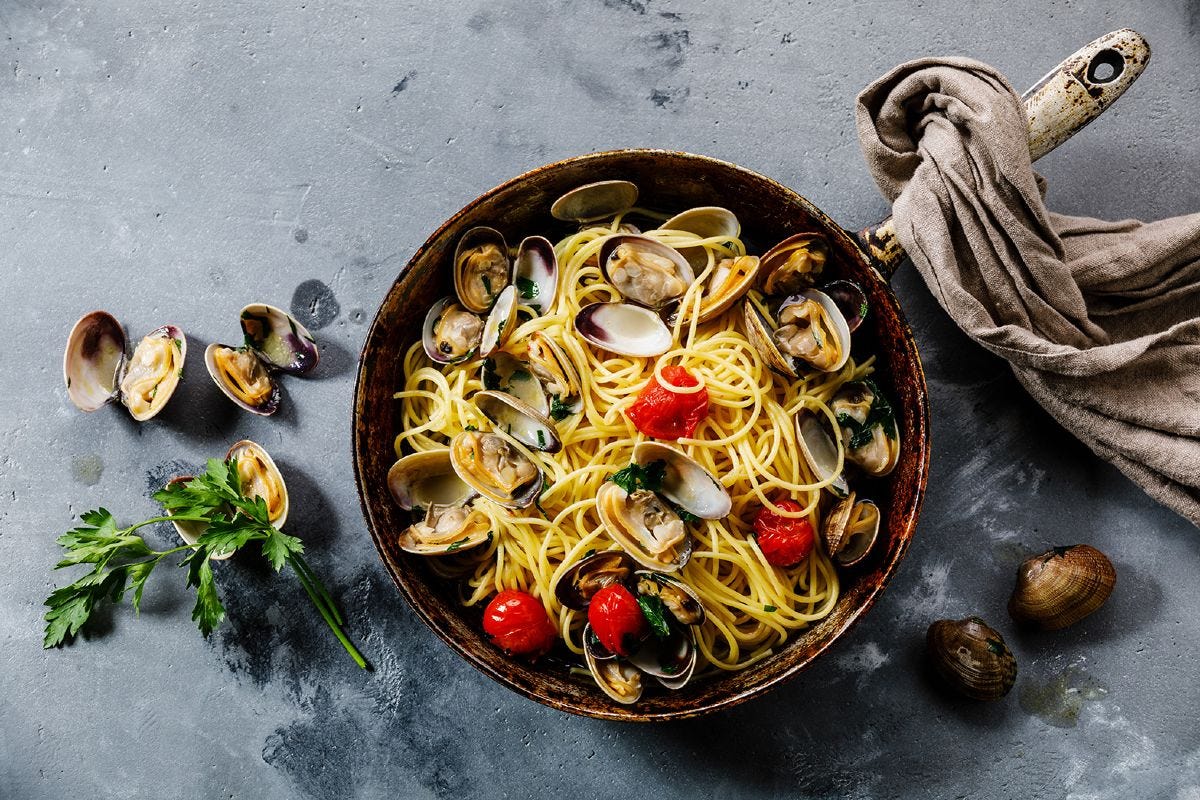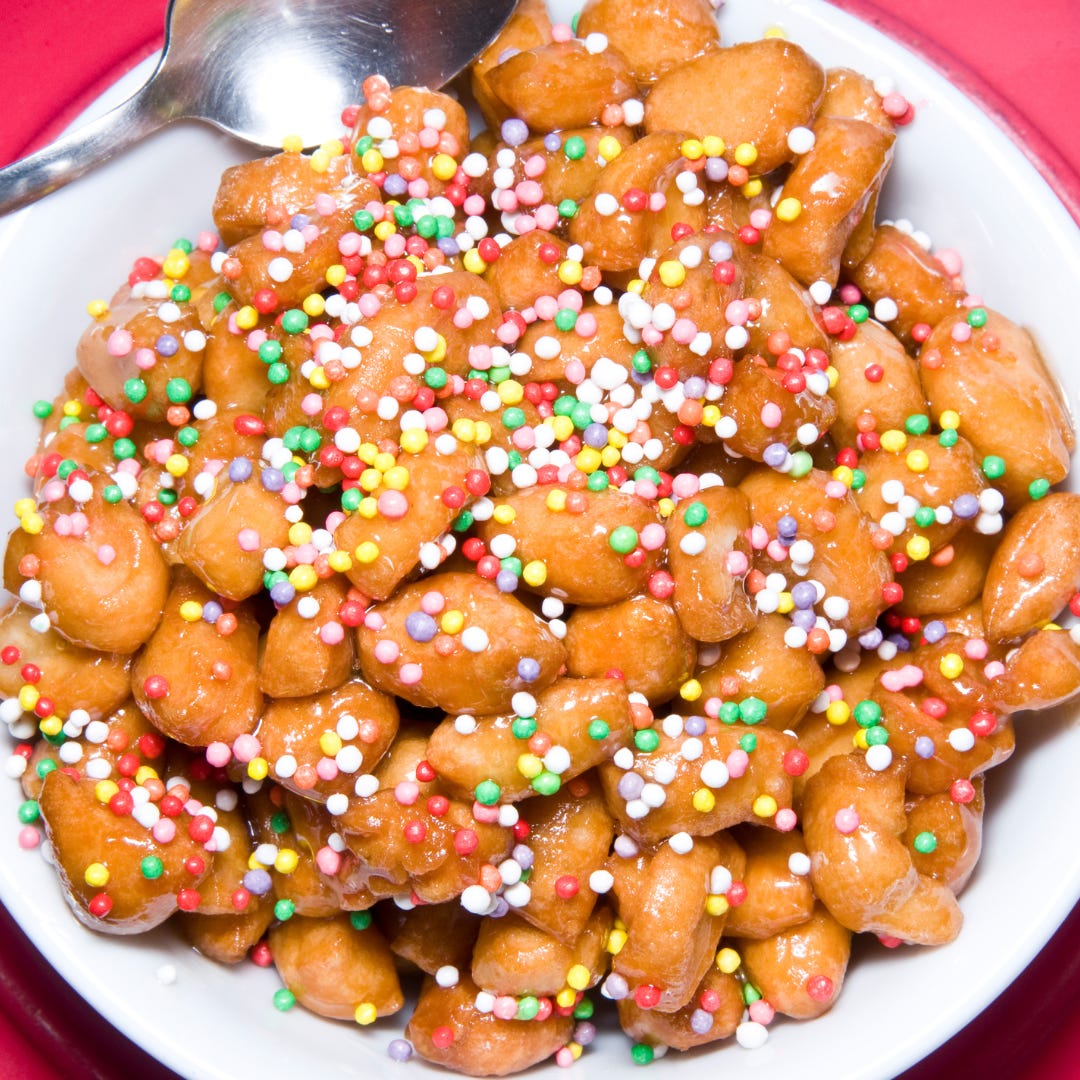Italy for Non-Italians: Christmas Traditions (and Quirks) You’ll Want to Steal
If you’re not Italian but adore this country, let me take you on a festive journey you’ll want to make your own!
As a non Italian, bilingual professor of Italian language and literature, born in a region where two languages intertwine seamlessly, I’ve always been captivated by Italy and its vibrant culture. Native in Italian and deeply immersed in Italian traditions, I have developed a lifelong love for the country’s unique blend of history, food and festivities. For anyone who, like me, admires Italy from the outside but feels an insider’s connection, exploring its Christmas and New Year traditions is an unforgettable experience.
From feasts that vary wildly by region to quirky traditions (yes, I’m looking at you, lenticchie! He he!), Italy offers a holiday experience that’s heartwarming, delicious and sometimes downright amusing.
If you’re not Italian but adore this country, let me take you on a festive journey you’ll want to make your own!
The Start of the Festivities: Decorating the Tree on December 8th
One of the first signs of the holiday season in Italy is the tradition of decorating the Christmas tree on December 8th, the Feast of the Immacolata Concezione (Immaculate Conception). This day, a public holiday, marks the official start of festive preparations, with families gathering to adorn trees and homes with lights and nativity scenes (presepe), setting the stage for the joyful weeks ahead.
Christmas Eve: La Vigilia di Natale
One of the most cherished Italian sayings captures the essence of Christmas Eve: “Natale con i tuoi, Pasqua con chi vuoi” - Christmas with your family, Easter with whomever you want! This reflects the deeply rooted Italian belief that Christmas is a time for family. And what better way to celebrate family than with food?
On La Vigilia, Italians abstain from meat, so fish and seafood dominate the table. In Naples, you’ll find dishes like spaghetti alle vongole (spaghetti with clams) and baccalà fritto (fried salted cod). Down in Sicily, the feast might feature pasta con le sarde (pasta with sardines) and gamberoni (grilled prawns). Meanwhile, in the north, regions like Veneto might offer a simpler zuppa di pesce (fish soup) or even anguilla marinata (marinated eel).
For dessert, struffoli (honey-drenched dough balls) and cannoli are southern showstoppers, while the north often prefers panettone or pandoro. Personally, I love seeing the creative debates that erupt over which sweet bread is superior: panettone’s candied fruits or pandoro’s powdered sugar simplicity? Both have their die-hard fans!
Christmas Day: Il Giorno di Natale
On Christmas Day, Italians leave the seafood behind and dive into heartier fare. The centerpiece is usually a meat dish, like cappone ripieno (stuffed capon) or roast lamb, depending on the region. In Emilia-Romagna, tortellini in brodo (tortellini in broth) is essential, a comforting, elegant dish that’s practically a warm hug in a bowl.
After the meal, the festivities continue with desserts like panettone, pandoro, or torrone (nougat), alongside a glass of spumante. In some families, there’s even a tradition of playing the tombola (a bingo like game), which always ends in laughter and a bit of competitive teasing.
New Year’s Eve: La Notte di San Silvestro and Lenticchie
New Year’s Eve in Italy is a mix of celebrations and superstitions, and one of the quirkiest involves lenticchie (lentils). Served alongside cotechino or zampone, lentils are said to bring prosperity in the new year because their shape resembles tiny coins.
But here’s the truth: Italians often admit that lentils aren’t exactly a gastronomic highlight. Many will joke about how they “endure” their portion of lentils for the sake of tradition. As my Italian friend from Naples humorously put it: “Le lenticchie non sono buone, ma il portafoglio ringrazia!” - “Lentils aren’t great, but my wallet thanks me! “ Another friend from Rome swears they only take a few bites and leave the rest, calling it “a sacrifice for the gods of fortune.”
Whether you love lentils or not, the tradition persists, and it’s almost unthinkable for the Cenone (Italian New Year’s menu) to skip them. After midnight, Italians toast with spumante or prosecco, and fireworks light up the sky.
Christmas Carols and Midnight Mass
Music plays a big role in Italian Christmas traditions, with classics like "Tu scendi dalle stelle" and "Astro del Ciel" (the Italian version of Silent Night) sung across the country. These songs, often performed in churches or town squares, capture the spiritual and communal heart of the season.
Speaking of churches, attending la messa di mezzanotte (midnight mass) on Christmas Eve is a beloved custom. For many, this solemn and beautiful service is the highlight of the holiday, combining faith, family, and community in a way that feels uniquely Italian. Even if you’re not religious, the experience of a midnight mass in a centuries-old Italian church is something to treasure.
Epiphany and La Befana: The Witch You’ll Love
Italy’s holiday season stretches all the way to January 6th, the Feast of the Epiphany. This day is celebrated with La Befana, a kindly witch who delivers gifts to children. According to legend, the Three Wise Men invited her to visit the Christ child, but she declined, only to later regret her decision. Ever since, she’s been flying on her broomstick, leaving sweets for good children and coal (or candy shaped like coal) for the naughty ones.
Children hang stockings for La Befana, and families enjoy sweets like torrone or befanini (festive cookies). For me, the figure of La Befana perfectly blends whimsy and tradition, reminding us that the holidays are also about forgiveness and second chances.
Regional Flavors and Holiday Magic
From Puglia’s pettole (fried dough balls) to Calabria’s pitta ‘mpigliata (spiced pastry), every corner of Italy offers unique holiday treats. Veneto’s risi e bisi (rice and peas) or Tuscany’s castagnaccio (chestnut cake) showcase how local ingredients shape traditions. As a passionate observer of Italian culture, I’m constantly amazed by the regional nuances that make Italian celebrations so special.
Why Italy Owns the Holidays
Italy’s holiday traditions are a masterclass in combining history, food, and family into an unforgettable experience. Whether you’re singing "Tu scendi dalle stelle" at midnight mass, debating panettone vs. pandoro, or choking down a forkful of lentils in hopes of a richer new year, there’s something undeniably charming, and a little humorous, about the Italian way of celebrating.
For anyone who isn’t Italian but dreams of embracing its holiday spirit, just remember: come hungry, come curious, and bring a little superstition. Who knows? Maybe those „lenticchie“ will work their magic after all.












Excellently written, interesting and educational. I'd love to visit this magical place.
This is really interesting. I enjoy reading about Italian culture and will be looking forward to the new posts.